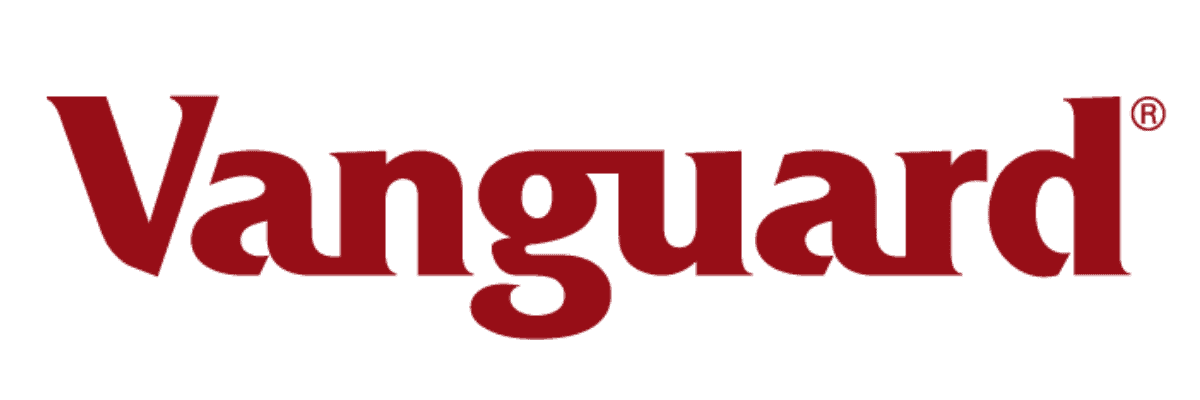Five Years into the Vanguard All-In-One Revolution
There are very few new financial products that really move the needle all that much. Vanguard’s Asset Allocation ETFs are one of the exceptions to that rule by becoming one of the more popular ETFs in recent memory.
We’re celebrating the fifth anniversary of Vanguard’s launch of the first Canadian “all-in-one ETFs.”. You might also see these products referred to as “portfolio ETFs.”
Back in 2018 Vanguard started this off by launching three initial ‘single-ticket’ ETFs:
- Vanguard’s Conservative ETF Portfolio (VCNS)
- Vanguard’s Balanced ETF Portfolio (VBAL)
- Vanguard’s Growth ETF Portfolio (VGRO)
Those three products allowed retail investors to invest in an international array of equities and bonds – all with the purchase of a single ETF.
In the years to come, Vanguard has added the all-equity ETF (VEQT), a very conservative ETF (VCIP), and the retirement income ETF (VRIF).
We’ve been huge fans of this product since Day 1, and there are many happy Canadian investors today who own one ETF in their TFSA, RRSP, and/or their non-registered accounts.
In fact, the growth of these products has meant that collective assets under management has grown to almost $9 billion. VGRO is currently the most popular with $3.8 billion in assets under management. For what it’s worth, my favourite of the bunch is VEQT. By purchasing one unit of VEQT, you instantly get exposure to over 13,600 companies from around the world!
In addition to simply being incredibly convenient products at a very low MER price point, these asset allocation ETFs offer a little-understood advantage over previous passive investing strategies: investor behaviour protection or embedded advice.
What I mean by “behaviour protection” is that even investors who use ETFs and understand passive investing can sometimes sabotage their own success. For example, Morningstar.com published a piece by Jeffrey Ptak back in 2018 that explained that investors in American Retirement Target Date funds (very similar to Canada’s asset allocation ETFs) did better than people who chose to pick their own individual ETFs.
It’s just human nature to want to “tinker around the edges” when you have to handle all of your own rebalancing and decision making. Asset allocation ETFs solve this behavioural issue and prevent us from getting in our own way!
Interview Time!
If you’ve been a longtime reader of ours at MDJ, you’re pretty familiar with all-in-one ETFs and why we think they’re such a great deal. So when I was granted the opportunity to interview Sal D’Angelo, Head of Products for Vanguard Americas, I decided to throw some in-depth curve balls his way in regards to some more specific applications of certain asset allocation ETFs as well as Vanguard’s general outlook on the markets. Here’s our interview transcript.
Has Vanguard or a 3rd party ever quantified the long-term behavioural value to investors of embracing asset allocation ETFs vs trying to pick their own stocks or more niche ETFs?
Sal D’Angelo: Dalbar regularly conducts an annual study of investor behaviour that looks at investor returns versus market returns for equity investors. While this gap changes every year, there is typically a 1-2% difference between expected versus actual returns.
Vanguard has regularly studied the concept of added value that financial advisors provide to investors, called “Advisor’s Alpha”. Typically we have found that financial advisors can add about 3% in added value based on holistic wealth management principles like estate and tax planning along with behavioural coaching, so we see additional value provided by financial advice.
For the Asset Allocation ETFs, they can help clients “stay the course” by remaining invested because it takes the guesswork out of rebalancing and can eliminate behavioural biases present when an investor sees losses in a particular asset class (ensuring some form of embedded investment discipline).
A few highlights on Vanguard’s long-term predicted investment returns:
- Our 10-year financial leverage expectations for Canadian and Global bonds have increased by almost 200bps since 2021.
- Equity markets have yet to drop materially below their fair-value range, which they have historically done during recessions. However, our global equity outlook has improved because of lower valuations and higher interest rates.
- CDN equities +1.70% improved financial leverage returns since last year. Most constructive on ex-US dev 6.8-7.8% and EM (6.5-7.5%). US 4.3-5.3% and CAD 5.3-6.3%.
Can you comment on these assumptions and/or predictions “in layman’s terms”?
Sal D’Angelo: Generally, what we are seeing is that bonds and equities are looking attractive in terms of current valuations. More specifically, the forward-looking outlook on a portfolio of 60% stocks and 40% bonds (a balanced portfolio) has improved significantly over the long term.
In fact, according to our forward-looking models for the next 10-years, the return expectations on both stocks and bonds have improved for Canada, U.S. and Europe when compared to last year. So long-term investors have reasons to be optimistic in terms of their investing expectations.
Despite a difficult 2022 in the bond market, we see a lot of opportunities for investors in this sector because of the current rising interest rate environment. So our message to investors is that bonds are back and we see this trend continuing over the coming year and years ahead.
How does Vanguard arrive at those forecasts? How would you characterize the accuracy of Vanguard’s forecasts in the past?
Sal D’Angelo: Our Investment Strategy Group (ISG) is responsible for an ecosystem of sophisticated forecasting and modeling platforms that powers our research, underpins our investment and advice methodologies, supports our investment management teams, and advises product development and portfolio decisions. The VCMM (Vanguard Capital Markets Model) is a sophisticated financial simulation engine that powers our investment outlook and asset allocation decisions. It comprises three main elements:
(1) a global, dynamic model that forecasts the drivers of long-term asset returns such as yield curves and equity market valuations;
(2) attribution models that attribute asset returns to the drivers; and
(3) a simulation engine to model the probability distribution of outcomes.
The VRIF ETF was an interesting addition to the asset allocation ETF family, and is a very unique product in the Canadian landscape. How would you compare that product to say VCIP or VCNS?
Sal D’Angelo: Generally, VCIP and VCNS are portfolios designed for clients in the accumulation phase, while VRIF is for decumulation, the intention is different for both, along with the investing strategy. VCIP/VCNS are based on a static asset allocation (steady-state long-term returns), while VRIF is a time-varying or dynamic asset allocation methodology (with a 10-year return outlook). This results in VRIF’s portfolio changing to reflect market conditions, always with the objective to achieve a consistent income payment of ~4% with taking on as little risk as possible.
VRIF is also unique with how it incorporates a total return approach. This means the portfolio is constructed to ensure it can help meet the daily living expenses of investors. There is an annual payout (about 4% of the portfolio) split across equal payments each month. This is appropriate for investors and retirees looking for regular income as well as helping RRIF account withdrawals. For example, if you hold $30,000 in VRIF at the start of the year, that equates to $100 a month, for $1,200 over the year.
You also get a fully diversified portfolio with a mix of stocks and bonds, global diversification and a low-cost management fee of 0.29%, which is currently about one-third of other similar retirement income products across the industry.
Another advantage to VRIF is that investors can rely on Vanguard’s global investment experts to monitor and assess the portfolio to meet the return target, along with providing regular rebalancing to help simplify the monthly income component. It really is a single ticket solution for investors to access monthly income.
With VRIF, what percentage of the returns so far in the funds have been capital gains vs Canadian eligible dividends vs non-Canadian dividends vs interest. (This is obviously important for Canadians holding the fund in their non-registered accounts.)
Distributions and tax breakdowns are available on our website (bottom of page):
Retirement Income ETF Portfolio (VRIF) – en | Vanguard Canada
What has been the general reaction or commentary from Canadians in regards to VRIF specifically?
Sal D’Angelo: With 30% of Canada’s population being 55 or older, the need for income has never been greater among investors. VRIF gives you a regular and consistent payout each month (currently 4% of the total portfolio) and readjusts it once per year. Each year, typically in January, we set a dollar amount and it’s the same for every month in that year. The outcome is a simple and low-cost investment option that can help people enjoy their retirement.
Additionally, VRIF was one of our fastest growing ETFs since its launch, indicating a strong demand for income-oriented investments. While there are other income alternatives available to investors, VRIF is designed to pay a consistent level of income over time, even in the event that interest rates change or decline in the future. With exposure to both stocks and bonds, it has the potential for capital appreciation and remains a very versatile product.
Final Thoughts
No matter what other competitors enter the Canadian asset allocation ETF market, there will only ever be one original investing pioneer – and that’s Vanguard.
As more Canadians learn about investing fundamentals such as the advantage of passive or active strategies, the benefits of diversification, and how to cut investment costs to the bone, the more popular asset allocation ETFs will get. There just isn’t a better way for the average Canadian to balance convenience, cost, and instant broad diversification.
A big thanks to Vanguard Canada for the insight into its impact on the Canadian ETF market over the last decade.
#sponsored
I've Completed My Million Dollar Journey. Let Me Guide You Through Yours!
Sign up below to get a copy of our free eBook: Can I Retire Yet?



